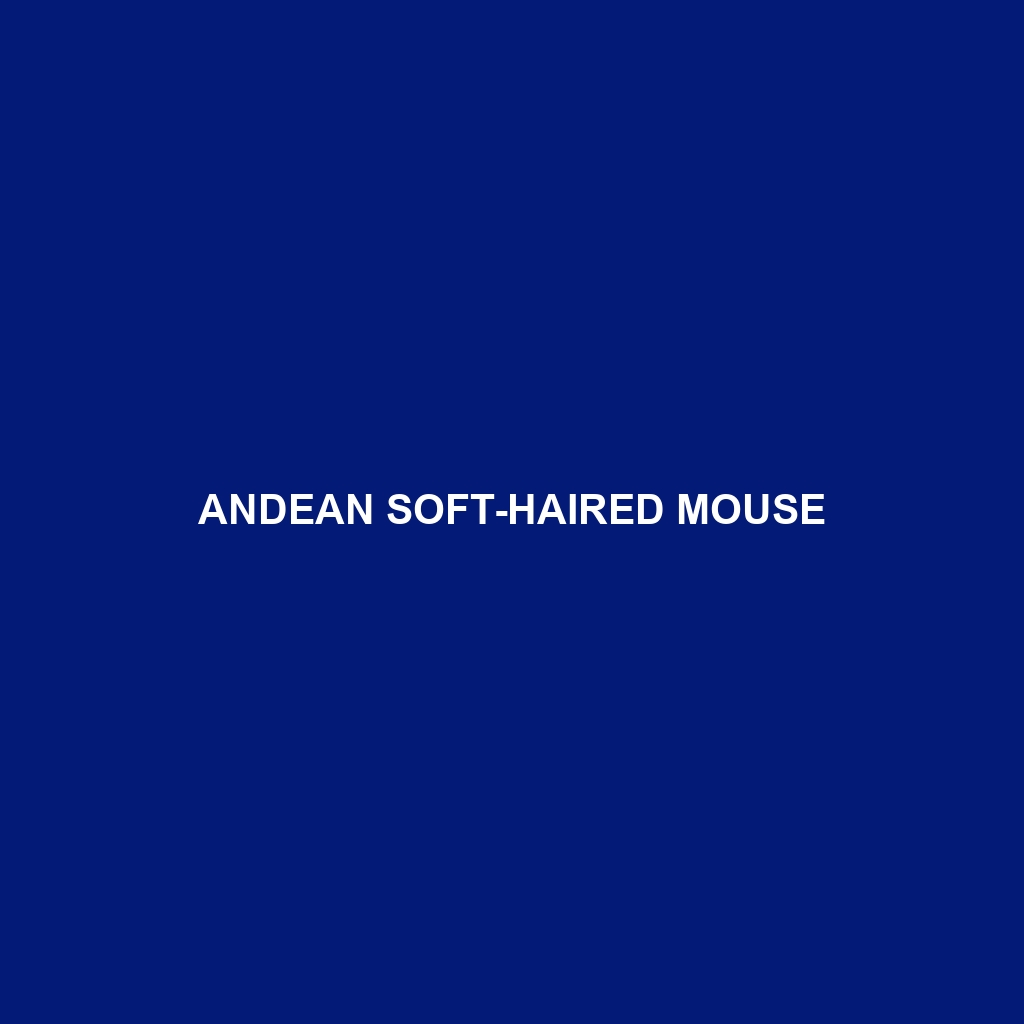Andean Soft-haired Mouse
Common Name: Andean Soft-haired Mouse
Scientific Name: Abrothrix andinus
Habitat
Andean Soft-haired Mouse is primarily found in the high-altitude regions of the Andes mountain range, specifically in countries such as Peru, Bolivia, and northern Argentina. These small mammals typically inhabit montane forests, alpine meadows, and grasslands, adapting to the cooler microclimates that characterize these environments. Their preference for elevations ranging from 2,500 to 4,500 meters above sea level allows them to thrive in areas with sparse vegetation and rocky terrains.
Physical Characteristics
The Andean Soft-haired Mouse generally exhibits a compact body, measuring about 8 to 11 centimeters long, excluding its long, tufted tail. Its fur is soft and dense, with a coloration that ranges from light brown to gray, allowing it to blend seamlessly with the rocky surroundings of its habitat. Distinctive features include large ears, prominent whiskers, and a slightly flattened head, which help in navigating through its environment. The small size and agile build enable quick movements, aiding in its survival against predators.
Behavior
In terms of behavior, the Andean Soft-haired Mouse is primarily nocturnal and crepuscular, becoming most active during twilight hours. These mice exhibit social behavior, often seen foraging in small groups. They are known for their agility and ability to climb, utilizing rocky outcrops and shrubs to evade threats. Their communication involves a series of high-pitched squeaks and body language, which are essential for maintaining social structures within their groups.
Diet
The diet of the Andean Soft-haired Mouse is herbivorous, primarily consisting of seeds, fruits, and tender plant material. In addition to these plant-based foods, they occasionally consume insects and other small invertebrates, providing them with essential nutrients. Their foraging behavior is mostly concentrated during the night, using their keen sense of smell to locate food sources in their mountainous habitat.
Reproduction
Reproductive activities in the Andean Soft-haired Mouse occur throughout the year, although breeding peaks during the warmer months. The gestation period lasts approximately 25 to 30 days, resulting in a litter of 2 to 5 pups. The young are born blind and helpless, relying heavily on their mother for nourishment and care. After several weeks, the pups become independent and are weaned off their mother’s milk, taking on foraging responsibilities shortly thereafter.
Conservation Status
Currently, the Andean Soft-haired Mouse is listed as Least Concern by the IUCN, although habitat loss and climate change pose threats to its populations. Continued monitoring is essential to ensure this species does not move toward a more endangered status, as shifts in environmental conditions can exacerbate existing vulnerabilities.
Interesting Facts
One fascinating aspect of the Andean Soft-haired Mouse is its remarkable ability to survive in extremely rugged terrains where few other species can thrive. Additionally, despite their small size, they play a crucial role in seed dispersal, contributing to the ecological balance within their habitat. Their presence supports both plant diversity and the broader food web.
Role in Ecosystem
The Andean Soft-haired Mouse plays a vital role in its ecosystem as both a herbivore and prey species. By consuming seeds and fruits, they contribute to plant regeneration and promote biodiversity in montane landscapes. Furthermore, they serve as a food source for various predators, including birds of prey and small mammals, highlighting their importance in maintaining ecological balance within their mountainous habitat.
